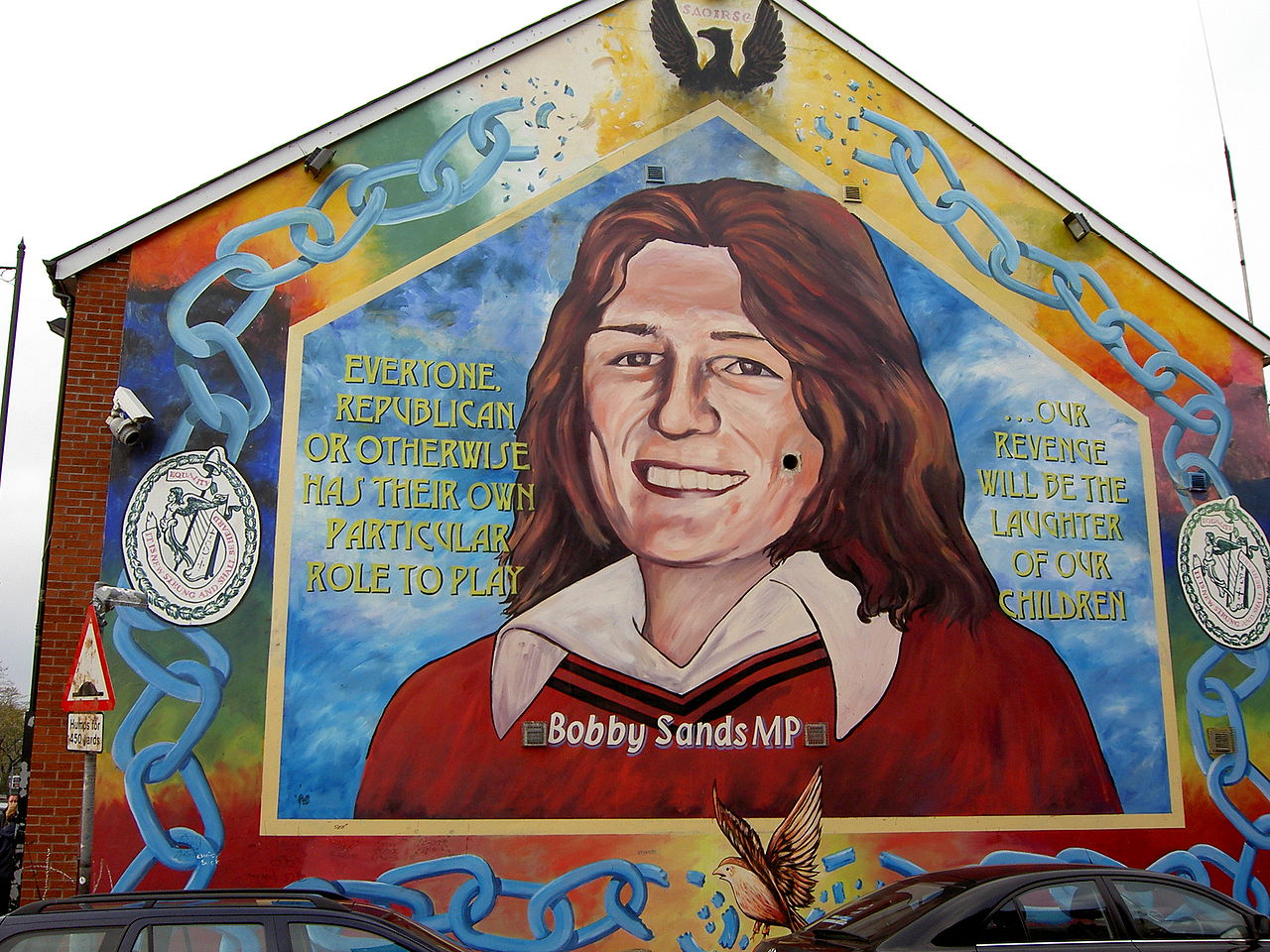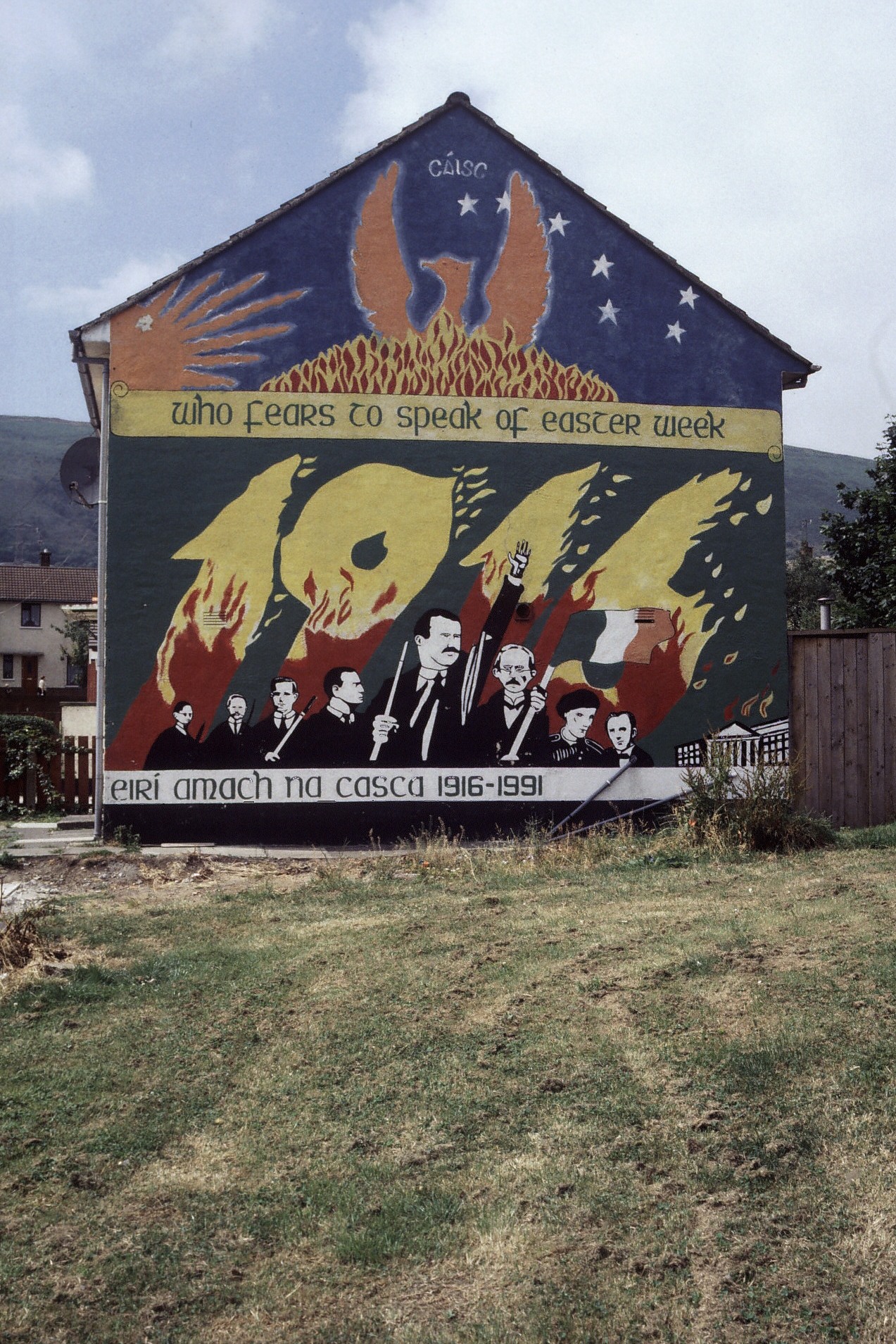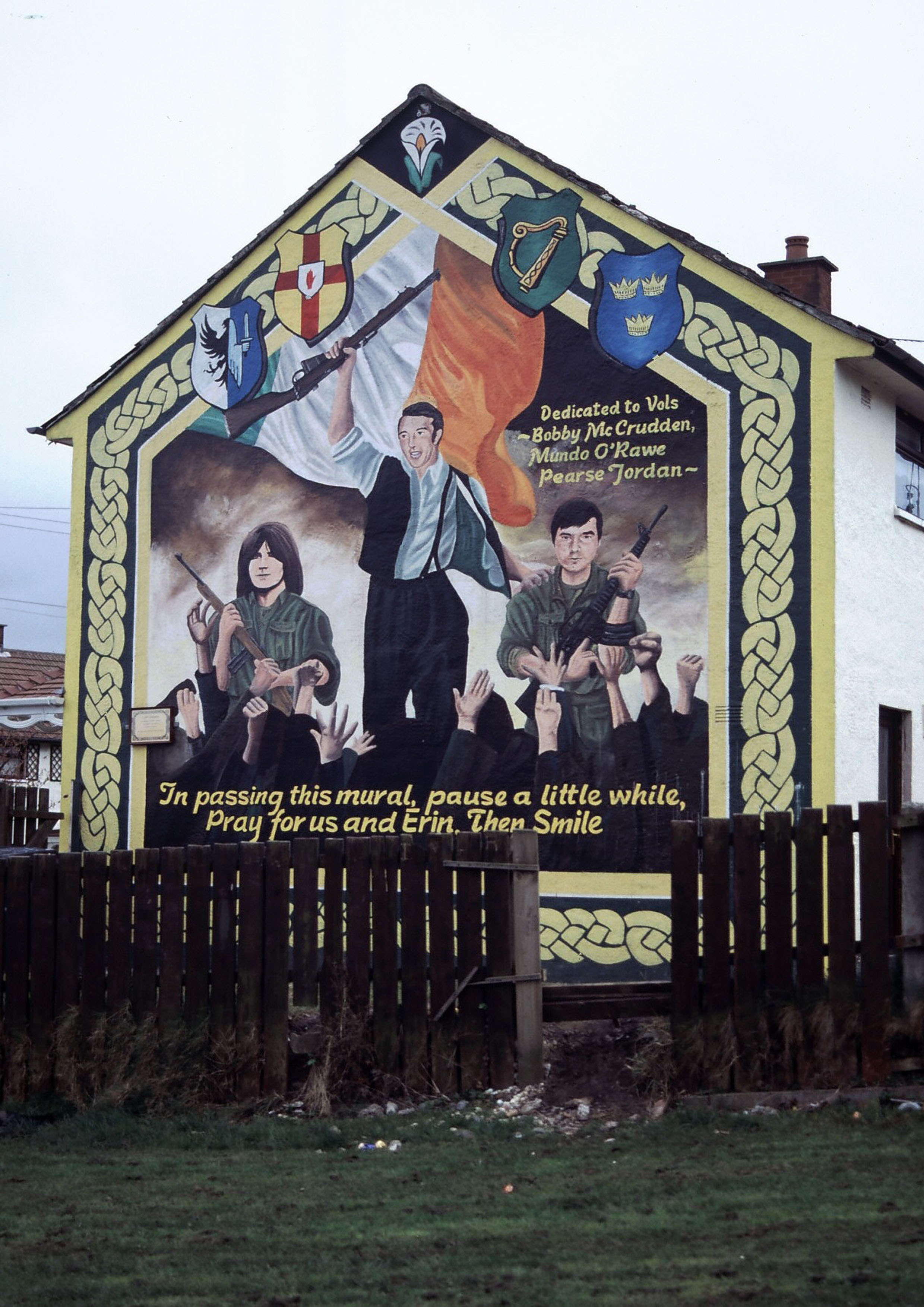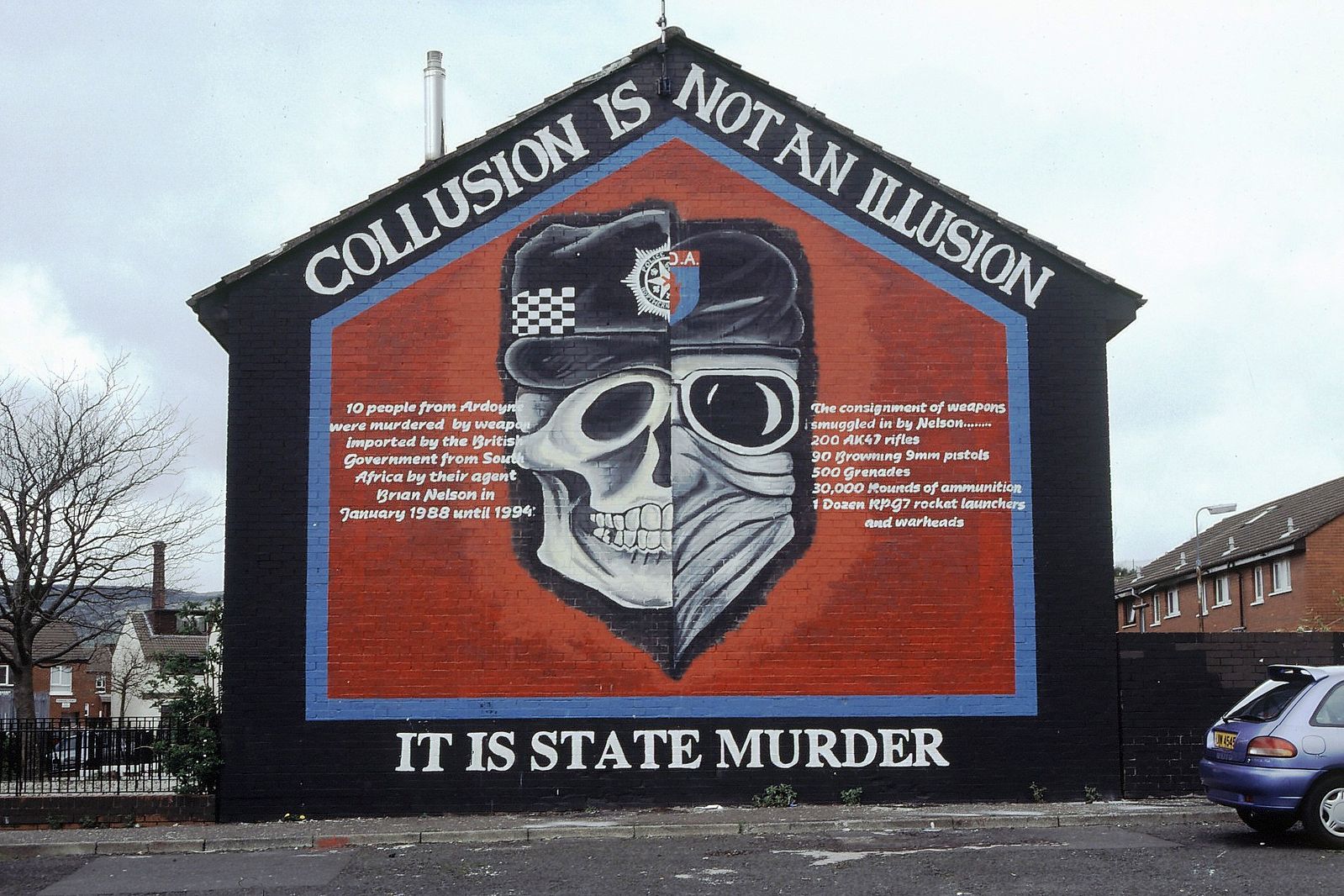The murals in Northern Ireland
- Fiche de cours
- Quiz et exercices
- Vidéos et podcasts
Découvrir un aspect de la notion « art et pouvoir ».
- L’île irlandaise se sépare en deux pays politiquement distincts en 1921, avec l’Irlande du Nord, qui appartient au Royaume-Uni, et la République d’Irlande, plus communément appelée Irlande.
- Les deux parties de l’île ont souvent été en confrontation, notamment due à leur opinion politique et leur religion.
- The Troubles est un conflit opposant les Catholiques républicains et les Protestants unionistes. Ce conflit a eu lieu pendant plus de 30 ans (fin années 1960-1998). Cependant, il a des racines bien plus profondes remontant au XVIIe siècle.
- Les peintures murales sont très importantes dans l’histoire du pays et politiquement. Elles racontent les évènements passés et sont comme un musée à ciel ouvert.
- Connaitre l’histoire de l’Irlande
- Connaitre les tensions qui ont existé entre l’Angleterre et l’Irlande
If you go to Northern Ireland, and more especially to major
cities like Belfast or Derry, you will discover lots of
paintings on the walls. It comes from the fact that Northern
Ireland is a country with a terrible history, and events
related to it have been recorded by artists everywhere you
go.
Consequently, everybody can understand what its inhabitants
have been through in the past centuries. It is also a way
that seems to tell the inhabitants of the country: Do not
forget! So, we will see that they are not only works of
art, they also express feelings and deal with topics such as
identity, memory, culture, etc.
Before dealing with these famous paintings, you must know that Northern Ireland has not always been Northern Ireland. Indeed, until 1921 and the Irish War of Independence, the island was not divided into two distinct countries, which means Northern Ireland did not exist one century ago.
It was created then when the English who ruled over
the country accepted leaving the place but refused to
give full independence to the country after two years of
war. They would live the island providing six counties
remained under British rule.
These counties were Antrim, Armagh, Derry, Down,
Fermanagh and Tyrone mostly inhabited by
Unionists, who were mainly Protestants and
in favour of the British crown. A treaty was
signed by Michael Collins on December 6th, 1921
and Northern Ireland was born. Then the island
partitioned between Northern Ireland and the Republic
of Ireland.
Soon, the Catholics in Northern Ireland were deprived of their civil rights and most jobs were given to the Protestants. The unemployment rate among the Catholics reached 30%! Tensions began between the two communities and a long period of violence which lasted about 30 years and known as the Troubles, spread all over the country.
In 1972 for example, whereas they were parading in the streets of Derry, the Catholics were attacked by British paramilitaries who shot 14 innocent men. This tragedy is known as Bloody Sunday. You can see murals commemorating it in Derry and Belfast.
Other paintings celebrate the paramilitary troops which used to protect the Catholic community from the Protestants: the IRA (the Irish Republican Army).
You can also contemplate the portrait of a young Catholic man imprisoned for firearms possession, Bobby Sands, who became the leader of the 1981 hunger strike movement and who died in prison after 66 days on strike.

Mural dedicated to Bobby Sand
(Belfast)
Easter Rising, an armed insurrection in Dublin, launched by Irish Republicans in 1916 in order to put an end to British rule and establish an Irish government has often been the topic of painters.

Mural depicting the Easter Rising
(Belfast)
But the unionists have painted lots of murals, too. Fiercely opposed to the nationalists, they praise everything that symbolizes the domination of Britain over the Catholic population, such as the battle of the Boyne in 1690 when William III of Orange defeated King James VII, representative of the Catholics.
Their paintings also depict paramilitary forces which opposed the IRA: UVF (Ulster Volunteer Force), UFF (Ulster Freedom Fighters), UDR (Ulster Defence Regiment), etc.
 Provisional IRA mural (Belfast) |
 Mural on the conspiration between the British Armed Forces and Ulster loyalist paramilitaries (Belfast) |
As you may see, the murals in Northern Ireland deal
with history, religion, politics,
terrorism, murders, etc. They are
considered as political paintings and it is
believed that 2,000 murals, repainted regularly,
have been registered since the beginning of the Troubles
in 1970.
They are very important for both the Irish who do not
want to forget what happened on their soil and the
tourists who can understand the history of the country as
if they were visiting an open air museum.
Do not forget that the Irish are fantastic story-tellers and they like expressing their feelings in books, films and paintings.

Des quiz et exercices pour mieux assimiler sa leçon
La plateforme de soutien scolaire en ligne myMaxicours propose des quiz et exercices en accompagnement de chaque fiche de cours. Les exercices permettent de vérifier si la leçon est bien comprise ou s’il reste encore des notions à revoir.

Des exercices variés pour ne pas s’ennuyer
Les exercices se déclinent sous toutes leurs formes sur myMaxicours ! Selon la matière et la classe étudiées, retrouvez des dictées, des mots à relier ou encore des phrases à compléter, mais aussi des textes à trous et bien d’autres formats !
Dans les classes de primaire, l’accent est mis sur des exercices illustrés très ludiques pour motiver les plus jeunes.

Des quiz pour une évaluation en direct
Les quiz et exercices permettent d’avoir un retour immédiat sur la bonne compréhension du cours. Une fois toutes les réponses communiquées, le résultat s’affiche à l’écran et permet à l’élève de se situer immédiatement.
myMaxicours offre des solutions efficaces de révision grâce aux fiches de cours et aux exercices associés. L’élève se rassure pour le prochain examen en testant ses connaissances au préalable.

Des vidéos et des podcasts pour apprendre différemment
Certains élèves ont une mémoire visuelle quand d’autres ont plutôt une mémoire auditive. myMaxicours s’adapte à tous les enfants et adolescents pour leur proposer un apprentissage serein et efficace.
Découvrez de nombreuses vidéos et podcasts en complément des fiches de cours et des exercices pour une année scolaire au top !

Des podcasts pour les révisions
La plateforme de soutien scolaire en ligne myMaxicours propose des podcasts de révision pour toutes les classes à examen : troisième, première et terminale.
Les ados peuvent écouter les différents cours afin de mieux les mémoriser en préparation de leurs examens. Des fiches de cours de différentes matières sont disponibles en podcasts ainsi qu’une préparation au grand oral avec de nombreux conseils pratiques.

Des vidéos de cours pour comprendre en image
Des vidéos de cours illustrent les notions principales à retenir et complètent les fiches de cours. De quoi réviser sa prochaine évaluation ou son prochain examen en toute confiance !









